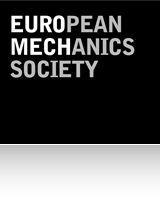617 – Multiscale mechanics, multiphysics modeling and simulations for energy storage
Chairperson:
Alberto Salvadori
Dipartimento di Ingegneria Meccanica e Industriale (DIMI)
Università di Brescia
Brescia
Italy
email: alberto.salvadori@unibs.it
Faced as we are with global environmental challenges, policies to reduce carbon dioxide emission and to promote cleaner, less polluting technologies are vital. Advances in technology are essential to make it possible to reach goals such as reduced carbon dioxide emission, the decarbonization of industry and society, and a carbon-neutral economy. The related transition of the energy sector demands the extensive deployment of innovative infrastructure and industrial plant that will harvest clean, renewable energy. However, the sources involved, including solar, wind and tide, suffer from intermittency. Therefore, the ability to store energy is of strategic importance in the green economy.
Rechargeable batteries are by far the most common electrical energy storage system, ranging in size from button cells, used, for instance, in watches, to megawatt load-leveling systems. To meet the increasing requirements of ambitious plans and efforts to tackle climate change, such as powering the majority of vehicles by electric motors supplied from batteries, new breakthroughs are needed. Similarly, the need for larger, more powerful and more readily rechargeable load-leveling batteries for electrical power infrastructure demands technological innovation.
Designing the next generation of ultrahigh-performance, reliable, safe, sustainable, and affordable batteries, requires an immense multi-disciplinary effort. In this vision, the mechanics community is called upon to play a central role, particularly in predicting and limiting battery degradation and capacity fade.
